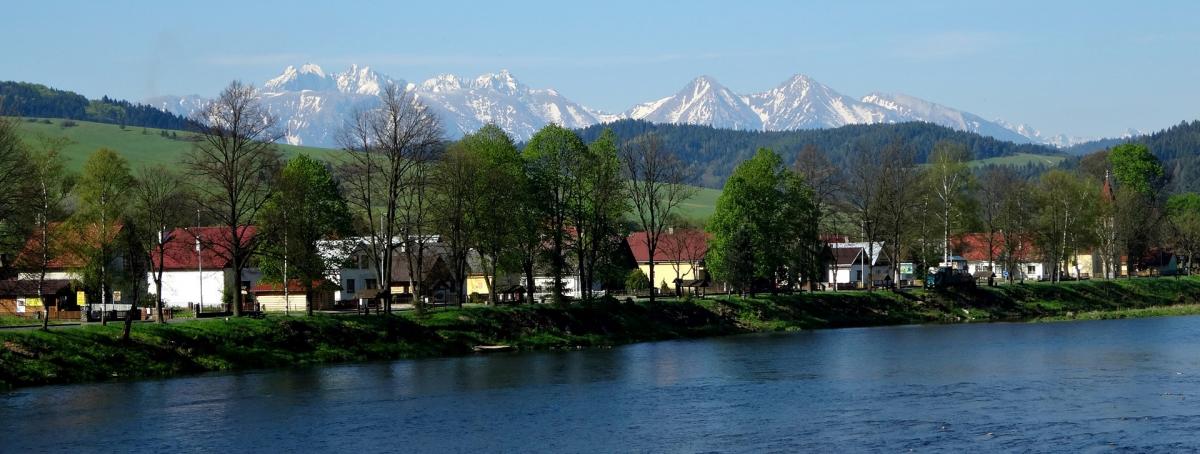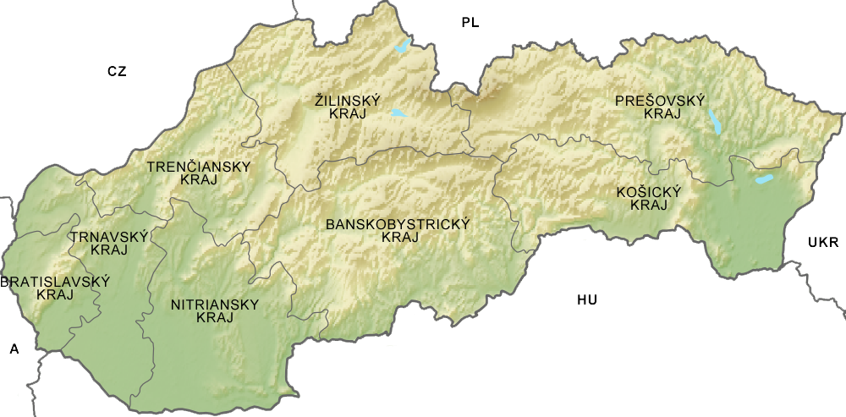
Official name: The Slovak Republic
Capital city: Bratislava
Population: 5,4 mil.
Total land area: 49,035 sq km
Short form: Slovakia
ISO 2-letters code: SK
3-letters code: SVK
Official Language: Slovak
Political system: parliamentary democracy
Date of Establishment: January 1, 1993, after the split of the former Czechoslovak Republic.
Currency: Euro (since 1 January 2009)
Membership in international organizations: EU, NATO, UN, OECD, OSCE, WHO, INTERPOL
Geography
The Slovak Republic is a central European country with vast forest areas extending on two-fifths of its territory. its total area of 49,035 sq km does not rank Slovakia among large countries. The Slovak Republic is bordered on the north by Poland; on the south by Hungary; on the west by the Czech Republic and Austria and its eastern border are formed by Ukraine. the surface of Slovakia is very irregular, characterized by lowlands, valleys, hills, highlands and mountain chains.
The south and the south-east of the country are covered mostly by lowlands: Východoslovenská nížina, Záhorská nížina and podunajská nížina, the last one being the largest and most fertile. the northern part is dominated by the mountain range of the Carpathian mountains. their well-known mountain chains are High Tatras, Low Tatras, Slovak ore mountains; volcanic Štiavnica mountains; greater Fatra and Lesser Fatra. many of them are part of national parks and protected landscape areas.
The High Tatras is the most famous Slovak mountain and it is the only mountain range with an alpine character on the Slovak territory.
Time zone: Central European Time ( CET )
Central European Standard Time = GMT+1:00
Central European Summer Time = GMT+2:00
Climate and Weather in Slovakia
The climate in Slovakia is continental with mild summer and winter temperatures, snow and rain, sun and wind. Although Slovakia is not a large country, the weather can be quite different in the mountainous north and in the plain south. Generally, the climate is relatively continental with almost no extremes below minimal -20°C (-4°F) or above maximal +37°C (+99°F). Winters are more severe in mountains, where the snow lasts the whole winter until March or even April and the night temperatures go down to -20°C or rarely even lower. Bratislava and Southern Slovakia is the warmest region. In summer, the temperatures may rise up to +30°C, on sunny and hot days even up to 35-37°C. There may be warm nights with temperatures above 20°C. Spring and autumn are something in between. It may rain at any time of the year and at any place.
Population and Religion
The total number of inhabitants is 5,4 mil. (women with 51,5% share). Apart from Slovaks, there are Hungarians, Czechs and other nationalities living together in Slovakia. Slovakia is traditionally a religious country. The first Christian bishopric was established in the 9th century in Nitra. The majority of people declare their affiliation to the Roman-Catholic Church. Other registered churches are Evangelical Church of Augsburg Confession, Greek Catholic Church, Reformed Christian, Orthodox, Jewish and others.
History
Present-day Slovakia was settled by old Slavic tribes around the 6th century. The first state formation - the Great Moravian Empire - appeared in the 9th century. In 907, the Germans and the Magyars conquered the Moravian state, and the Slavs fell under Hungarian rule from the 10th century up until 1918. When the Habsburg-ruled empire collapsed after World War I in 1918, the Slovaks joined the Czech lands of Bohemia, Moravia, and part of Silesia to form the new joint state of Czechoslovakia. Shortly after the“Velvet Revolution” in 1989 the Czechoslovak Socialist Republic split into two and the Slovak Republic came into existence on Jan. 1, 1993. In 2004, Slovakia joined the EU and NATO. In May 2005 it ratified the EU constitution and adopted the Euro currency in 2009.
